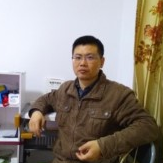Understanding Urban Expansion and Weather Extremes through Remote Sensing, Spatial Analysis and Numeric Simulations
A special issue of Remote Sensing (ISSN 2072-4292). This special issue belongs to the section "Urban Remote Sensing".
Deadline for manuscript submissions: 31 August 2024 | Viewed by 1208
Special Issue Editors
Interests: climate change; remote sensing; spatial analysis; statistical modeling; machine learning; urbanization; sustainable development; urban planning
Special Issues, Collections and Topics in MDPI journals
Interests: climate risk assessment; urban environment; health geography; disaster and emergency management; human–environment interaction
Special Issues, Collections and Topics in MDPI journals
Special Issue Information
Dear Colleagues,
In the current Anthropocene era, humans have exerted unproportional impacts on the natural environment. They have caused significant environmental deterioration, resulting in threats to ecosystem functioning and further deterioration of the sustainability of human society. Worldwide, urban agglomerations have expanded rapidly since the Industrial Revolution era. Currently, cities accommodate more than 50% of the global population, but their intense activities increase the frequency of extreme events (e.g., droughts, rainstorms, and floods) and human-induced environmental degradation (e.g., biodiversity loss, water security, atmospheric pollution, the urban heat island effect, and land subsidence). Over the past decades, newly emerging techniques and methods of remote sensing, particularly optical, thermal, and microwave remote sensing approaches, have deepened our understanding of the urban–nature relationship through the facets of human-induced environmental deterioration, which can be monitored and quantitatively evaluated using multiple-source and long time series remote sensing datasets. Although we have witnessed this boom in technology and theories of remote sensing science that facilitate the studies of the combined influences of global climate change and urbanization, it should be noted that remote sensing approaches can only provide the apparent physical evidence of the urban–nature relationship, e.g., evapotranspiration, land surface temperature, heat flux, and atmospheric CO2 concentration. In other words, an insightful analysis for interpreting the cause–effect mechanism of the urban–nature relationship requires collaborative research integrating remote sensing and related sciences. Thus, to better address the nexus between intensive human activities and their associated environmental impacts, a transdisciplinary approach that combines the knowledge of remote sensing, spatial analysis, numeric simulations, and other related domains is critical to better understand the causes and possible risks of climate change and urbanization.
This Special Issue aims to provide an opportunity to exchange ideas among scholars, planners, and decision makers who are engaged in climate change, urban resilience, land development, disaster reduction and prevention, natural resource management, ecosystem restoration, and related domains. Thus, in the sense of a transdisciplinary approach, innovative manuscripts that apply state-of-the-art theories and methods using remote sensing, spatial analysis, process-based modeling, and quantitative statistics to address the topic of this Special Issue are expected.
Original articles and review papers including, but not limited to, the following themes are welcome:
- Weather extremes;
- Urban resilience;
- Climate change, mitigation, and adaptation;
- Multi-source remote sensing data;
- Land development pattern;
- Artificial modification of climate;
- Urban heat island effect;
- Urban geological risk;
- Urban waterlogging;
- Flood management.
Dr. Hao Zhang
Dr. Ashraf Dewan
Guest Editors
Manuscript Submission Information
Manuscripts should be submitted online at www.mdpi.com by registering and logging in to this website. Once you are registered, click here to go to the submission form. Manuscripts can be submitted until the deadline. All submissions that pass pre-check are peer-reviewed. Accepted papers will be published continuously in the journal (as soon as accepted) and will be listed together on the special issue website. Research articles, review articles as well as short communications are invited. For planned papers, a title and short abstract (about 100 words) can be sent to the Editorial Office for announcement on this website.
Submitted manuscripts should not have been published previously, nor be under consideration for publication elsewhere (except conference proceedings papers). All manuscripts are thoroughly refereed through a single-blind peer-review process. A guide for authors and other relevant information for submission of manuscripts is available on the Instructions for Authors page. Remote Sensing is an international peer-reviewed open access semimonthly journal published by MDPI.
Please visit the Instructions for Authors page before submitting a manuscript. The Article Processing Charge (APC) for publication in this open access journal is 2700 CHF (Swiss Francs). Submitted papers should be well formatted and use good English. Authors may use MDPI's English editing service prior to publication or during author revisions.
Keywords
- climate change
- multiple-source remote sensing data
- land development
- urban encroachment
- extreme events
- numerical simulation
- spatial analysis
- machine-learning methods
- built environment
- climate adaptation and mitigation strategy






